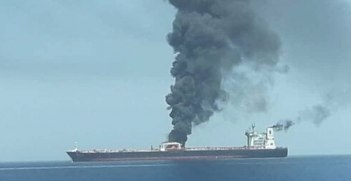On Mass: An Argument for Real Debate

Emphasising the importance of mass in military strategy is crucial for Australia’s military success. Australia must shift its focus away from various myths and fantasies and develop an independent, but not isolated, national military policy.
“The strategic ‘Concept du Jour’ will be tomorrow’s stale left over, until it is rediscovered, recycled, and revealed as a new truth.”
– Colin Gray
In Army’s October edition of Land Power Forum, Dr Al Palazzo offered some inconvenient truths about Army’s lack of appetite for debating strategy. He argues that in place of real debate regarding military strategy, there appears to be a series of ideas which could be described as Gray’s “concepts du jour” (“concept/strategy-of-the-day”) and which mostly seem to be variations of Liddell Hart’s indirect approach. That is, Liddell Hart’s work developed as an alternative to the bloody morass of World War I, seeking to avoid the blunt instrument of force against force. While there is certainly merit in exploring the indirect approaches within network-centric warfare, information operations, and cyber warfare, the trick is to avoid disastrous seduction. Clausewitz’s “friction of war” is inescapable; attrition will occur.
The importance of mass in conflict is one such debate to have. John Ellis suggests in Brute Force that based on manpower and the availability of steel and coal, the allied victory of the Second World War was an inevitability. Azar Gat observes that the Soviet doctrine developed through the early 20th century recognised niche forces as inadequate instruments of real national (read Bolshevik) power, but were rather a cut of convenience. The Soviets defeated an army that was recognised as being better tactically trained and led. They saw beyond the limitation of German manoeuvre concepts and their over-reliance on operational shock. Effective militaries are big: less up front, more in the tail. Providence is still on the side of the big battalions, especially when they shoot well.
Australia must avoid shrouding national strategic solutions in myth. As James Brown has pointed out “…the defence of Australia is more sophisticated than the bronzed sons and daughters of Anzac grabbing a rifle and rushing to the front.” This is the myth of “punching above your weight because your soldiers are superior,” and it is this myth that underwrites many of the indirect approaches offered up as strategy today. Antony Beevor suggests that the “disastrous cliché” of punching above your weight was set in motion by Churchill in September 1944, and is a tool of propaganda and motivation rather than a calculation of victory. Such national delusions allow an intellectual escape from limitations such as a lack of mass.
The concept of mass is understood best by the Clausewitzian precept “You can never be too strong.” This includes, but is not limited to, troops. Across the spectrum of national military power, it requires further examination and questions like, “what should be the size of our strategic fuel reserves?”, “Should we have an army of threes or fours?”, “How joint do we need to be?” More than anything, the veil of secrecy must be removed. The stunning lack of clarity within the debate about the size of the submarine fleet is a recent example of unnecessary secrecy when fifty billion dollars is on the line. Such a complex project requires clear communication to the public. Likewise, the debate about the number of Joint Strike Fighters is a worse malaise, offering only two options, even though the platform was apparently, a force multiplier.
This is not a critique of military capability planners who are constrained by unrealistic strategic concepts. The defence industry, for example has been rebranded as a provider of jobs and growth, assumedly because building organic weight and resilience in military power (that is, reinforcing mass) is politically and socially unpalatable. Government owned factories are an anachronism and the private sector prevails.
We call for the next strategic outlook be bold enough to identify strategic gaps – gaps such as building stuff in limited quantities and crewing it with the “sons and daughters of Anzac.” Strategy actually needs to stop using the ambiguities of “complex” and “adaptable” and start presenting viable (and to an adversary, severely unpalatable) choices. The current shadowy spectre of the nuclear option as “the solution to all” shows an even more prodigious level of intellectual narrowness. Diversity of thought matters. Issues – big issues – that cannot be addressed under current constraints, fiscal, political or cultural, long term and unlikely; need to be left as open questions. Mass in all its forms of national power is one such uncomfortable area for the Australian strategic condition.
A true national strategy is one that is developed independently, but not isolated from, the wielders of force. It would be nice to see green papers before white. This then leaves the broader Australian community to debate the “so what.” That is a richer, more beneficial line of questioning and “concepts du jour” don’t tend to survive very well in that environment. The stated strategic goal of “Defending the Nation and its interests,” is sadly, to use Colin Gray’s words, “stupefyingly obvious” and has little meaning. It provides a catch-all for any agenda. But by including the fundamentals of military power, including mass, it now is the time to calculate a coherent and realistic strategy.
Cate Carter is a PhD Candidate in the field of Armed Forces and Society at Deakin University. Cate has been an army officer for 25 years, working in Bougainville, Timor Leste, and the United Nations Headquarters.
Jason Thomas is a strategic planning consultant based in Victoria, trading as De Montaigne Strategic Consulting. Jason served as an Army officer for 30 years, including operational service in East Timor and the Middle East and command of the School of Armour.
This article is published under a Creative Commons Licence and may be republished with attribution.





